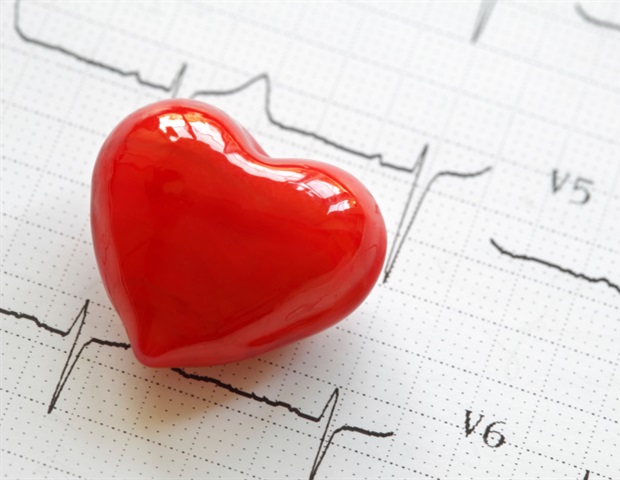Benefits of sport and leisure activities outweigh the risks for people with heart disease, cardiologists say
While exercise is generally beneficial for a person’s overall health, physical activities may increase the risk of adverse cardiovascular disease events in certain susceptible individuals. However, cardiologists say that the benefits outweigh the risks. Findings from new data reviews in studies appearing in CJC Open and the Canadian Journal of Cardiology, published by Elsevier, detail the risks associated with various types of sport and leisure activities.
Cycling, hockey and hunting top the list of leisure activities associated with the highest number of natural deaths in Québec, of which 95% are sudden cardiac deaths. Researchers examined coroners’ reports, autopsy findings, and police records to analyze the frequencies, rates, etiology, and characteristics of natural deaths related to sport and recreation in Québec, Canada, from January 2006 to December 2019. In total, they identified 2,234 deaths associated with sport and recreation over the 14-year period (averaging three per week, including unintentional injury deaths), of which 297 were attributable to natural causes. Of these, data showed that death rates increased starting from age 35, peaking in males 45 and over. In 65% of the cases recorded by the researchers, there was no automated external defibrillator (AED) readily available.
Lead investigator Philippe Richard, PhD, Direction de la sécurité dans le loisir et le sport, Ministère de l’éducation du Québec, Trois-Rivières, Québec, Canada, and coauthor of the study “Natural Causes of Sport and Recreation-Related Deaths in the General Population: A 14-Year Review in Québec, Canada,” says, “The unavailability of AEDs highlights a critical gap in emergency preparedness, especially in the context of five of the six activities with the highest death frequencies (cycling, hunting, jogging, hiking or walking, and swimming), which often occur in locations where AEDs are not readily accessible. As Québec is currently working on AED-related legislation, these results underscore the necessity for a comprehensive approach that extends beyond public places to ensure adequate (AED) coverage for activities in rural or remote areas, where the risks are pronounced and immediate access to emergency care is crucial.”
Carl J. Lavie, MD, Ochsner Heart and Vascular Institute, New Orleans, coauthor of the accompanying editorial “Reducing Rates of Exercise and Sports Related Cardiac Mortality,” points out, “Reducing premature mortality is a priority for most clinicians, including cardiologists, general internists, and family physicians, but certainly for those involved in the care of athletes and active individuals. While placement of AEDs in remote settings (e.g., hunting or ski cabins) or in areas with high exercise traffic, as well as drone-delivered AED networks, are intriguing strategies, maintenance requirements and financial investments may limit feasibility. While still in development and undergoing regulatory approvals in many countries, ultraportable AEDs may offer advantages in the future. However, at present, there is no convincing evidence to support device performance or clinical, or safety outcomes, calling for further research on their effectiveness, particularly in sports and recreation-related settings, before considering widespread uptake.”
According to the authors of this research project led by Dr. Richard as part of an initiative from the Ministère de l’éducation du Québec, the results of this study and their practical applications (such as identifying at-risk populations, addressing challenges in remote areas, and emphasizing the importance of medical screening, AEDs, CPR, and legislation) are transferable to other physically demanding tasks common in Canada, such as snow shoveling or gardening.
Researchers from the University of Toronto’s Sports Cardiology Program have observed that many caregivers, including cardiologists and family physicians, have major concerns about the risk of sport, especially endurance sport, in individuals with any type of heart disease. They often counsel these individuals to severely limit their athletic and sport activity. However, there is a shift in philosophy, with recent research and expert guidance from professional societies downplaying the risks. The investigators have compared the risk of sport and training to risks undertaken in recreational activities and “activities of living” to provide context.
Lead investigator and author of the review article “Absolute and Relative Risk of Exercise: When in Doubt, Let Them Play” Paul Dorian, MD, MSc, FRCPC, Department of Medicine, University of Toronto, Division of Cardiology, and Sports Cardiology Toronto, Heart & Stroke/Richard Lewar Centre of Excellence in Cardiovascular Research, St. Michael’s Hospital, says, “Our prior studies have shown that sudden death during sport is an extremely rare phenomenon. Diseases or conditions, for example, hypertrophic cardiomyopathy, which are often considered conditions likely to be associated with catastrophic events such as cardiac arrest, are much less dangerous than most people believe. We believe athletes should be permitted to make their own decisions about what is safe or not safe for them depending on their values and preferences, rather than be told what is ‘allowed’ versus ‘not allowed.’ Overall, we think that engaging in vigorous and even competitive physical activity for most individuals with heart disease is relatively safe.”
Senior investigator Paul Poirier, MD, PhD, Institute of Cardiology and Pulmonology, and Faculty of Pharmacy, Laval University, and coauthor of “Natural Causes of Sport and Recreation-Related Deaths in the General Population: A 14-Year Review in Québec, Canada,” underscores this and notes, “It would be a mistake to conclude that cycling, hockey, and hunting are activities to be avoided because of the risk of natural death associated with them. There are many more people dying of cardiac arrest while sleeping, sitting in an armchair, or raking. A sedentary lifestyle is much more damaging than recreation and sports.”
Source:
Journal references:
- Richard, P., et al. (2024). Natural Causes of Sport and Recreation-Related Deaths in the General Population: A 14-Year Review in Québec, Canada. CJC Open. doi.org/10.1016/j.cjco.2024.09.002.
- Lavie, C. J., et al. (2024). Invited Commentary for Canadian Journal of Cardiology Open Reducing Rates of Exercise and Sports Related Cardiac Mortality. CJC Open. doi.org/10.1016/j.cjco.2024.10.003.
- Dorian, P., et al. (2024). Absolute and Relative Risk of Exercise: When in Doubt, Let Them Play. Canadian Journal of Cardiology. doi.org/10.1016/j.cjca.2024.10.006.
Source link : News-Medica

